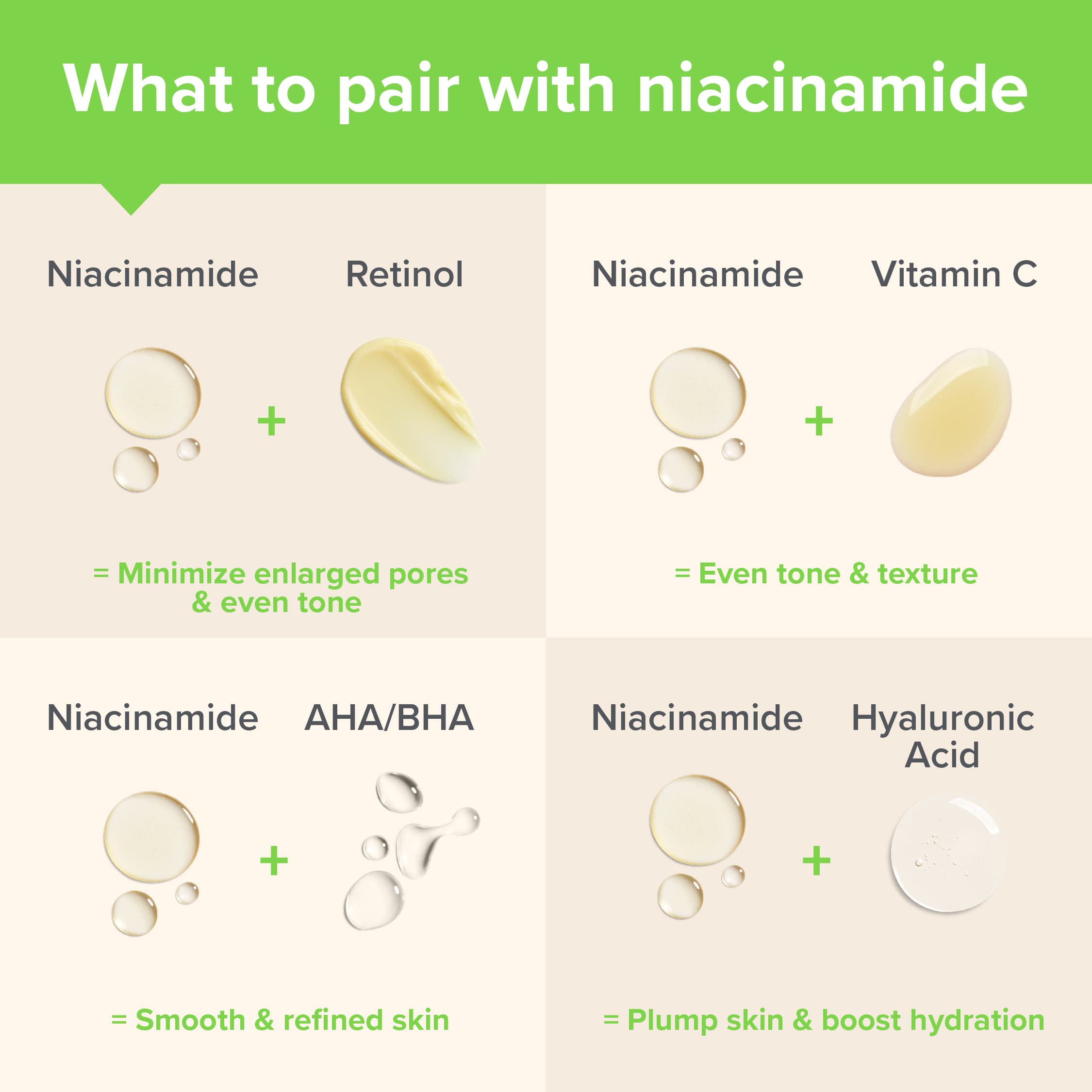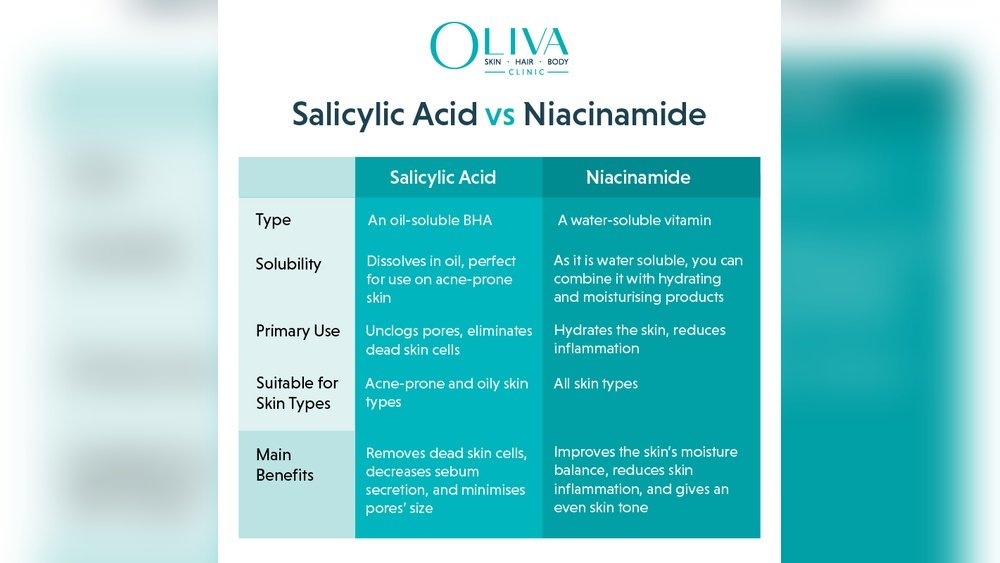If you’ve ever wondered whether you can safely combine niacinamide with acids in your skincare routine, you’re not alone. Both ingredients offer amazing benefits—niacinamide brightens and soothes, while acids like glycolic and salicylic help exfoliate and clear pores.
But mixing them without the right knowledge can lead to irritation or reduce their effectiveness. You want glowing, healthy skin, not redness or confusion about what works best. So, how do you use niacinamide with acids safely? Keep reading to discover the expert tips that will help you get the most out of your skincare without risking irritation or wasted products.
Your skin deserves it.

Credit: www.paulaschoice-eu.com
Niacinamide And Acids Compatibility
Niacinamide and acids can work together in skincare but require careful use. Both ingredients offer unique benefits, yet their compatibility depends on type and timing. Understanding how to combine them keeps skin healthy and avoids irritation.
What Are Niacinamide And Acids?
Niacinamide is a form of vitamin B3 that calms skin and improves texture. Acids like AHAs and BHAs exfoliate and brighten by removing dead skin cells. Both help with uneven tone, dark spots, and pores.
Can Niacinamide Be Used With Acids?
Niacinamide works best at a neutral pH, while acids need a low pH to be effective. Mixing them directly may reduce their benefits or cause skin flushing. They can be used in the same routine if applied at different times.
Which Acids Should Be Avoided With Niacinamide?
Strong exfoliating acids like glycolic acid and salicylic acid may irritate skin when combined with niacinamide. Using these ingredients together can cause redness or reduce acid effectiveness. It’s safer to separate their use.
How To Layer Niacinamide And Acids Safely
Use acids in the morning and niacinamide at night or on alternate days. Apply acid products first, wait for absorption, then use niacinamide if in the same routine. This method helps maintain ingredient stability and skin comfort.

Credit: www.amazon.com
Acids To Avoid With Niacinamide
Niacinamide is a popular skincare ingredient known for its calming and brightening effects. Mixing it with acids requires care. Some acids can irritate the skin or reduce the benefits of niacinamide. Knowing which acids to avoid helps keep your skin healthy and glowing.
Ahas And Bhas
AHAs (alpha hydroxy acids) and BHAs (beta hydroxy acids) have a low pH level. Niacinamide works best at a neutral pH. Using them together can cause redness and flushing. Common AHAs include glycolic acid and lactic acid. Salicylic acid is a well-known BHA. Mixing niacinamide with these acids may reduce their effectiveness or cause skin irritation.
Vitamin C (l-ascorbic Acid)
Vitamin C, especially L-Ascorbic Acid, has a low pH. Niacinamide prefers a neutral pH. Combining these can cause a chemical reaction that reduces their benefits. This mix can also cause skin flushing or irritation. It is better to use vitamin C in the morning and niacinamide at night for best results.
Strong Exfoliating Acids
Harsh exfoliating acids, such as high concentration AHAs or BHAs, can damage the skin barrier when used with niacinamide. This may lead to redness, peeling, or sensitivity. Avoid layering these acids with niacinamide in the same routine. Instead, alternate their use on different days to protect your skin.
Safe Layering Tips
Safe layering is key when combining niacinamide with acids. It helps avoid irritation and keeps your skin calm. Understanding how to layer these ingredients allows you to enjoy their benefits without problems.
Niacinamide works best at a neutral pH, while acids like AHAs and BHAs prefer a lower pH. Applying them together may reduce their effectiveness or cause redness. Follow simple rules to keep your skin happy.
Layering Niacinamide And Acids At Different Times
Use acids such as glycolic or salicylic acid in the morning. Apply niacinamide in the evening instead. This timing avoids conflicts between pH levels and reduces skin irritation.
Apply A Gentle Cleanser First
Start with a mild cleanser to remove dirt and oil. Clean skin helps ingredients absorb better and reduces the chance of irritation. Avoid harsh cleansers that strip your skin.
Use Thin To Thick Product Order
Apply liquid acids first as they are thinner. Next, add niacinamide serums, which are usually thicker. Finish with moisturizer to lock in hydration and protect your skin barrier.
Introduce New Products Slowly
Add one product at a time to your routine. Watch your skin’s reaction for a few days. Stop use if redness or discomfort occurs, then try again later at a lower frequency.

Credit: sublimelife.in
Timing Your Skincare Routine
Timing your skincare routine matters when using niacinamide with acids. Proper timing helps avoid irritation and keeps both ingredients effective. It also allows your skin to absorb each product fully.
Separating niacinamide and acids by time or day reduces the risk of redness or flushing. This simple step improves results and keeps your skin calm.
Using Niacinamide And Acids At Different Times
Apply acids like glycolic or salicylic acid first on clean skin. Wait 20-30 minutes before applying niacinamide. This pause lets your skin adjust and prevents pH conflicts.
Many prefer acids in the evening and niacinamide in the morning. This routine supports skin renewal overnight and hydration during the day.
Alternating Days For Sensitive Skin
Sensitive skin may react to using niacinamide and acids together. Try using acids one day and niacinamide the next. This method lowers irritation while maintaining benefits.
Track how your skin feels and adjust timing if redness or dryness appears.
Layering Order For Best Absorption
Acids usually have a low pH and work best on bare skin. Apply them first for maximum exfoliation. After waiting, layer niacinamide, which prefers a neutral pH.
Finish with moisturizer to lock in hydration and soothe skin.
Potential Side Effects And Precautions
Using niacinamide with acids may cause some side effects. Knowing the risks helps you protect your skin. Precautions reduce irritation and keep your skin healthy.
Possible Skin Irritation
Niacinamide is usually gentle but can cause redness or itching. Acids like glycolic or salicylic acid may increase this risk. Sensitive skin types are more likely to react. Start with small amounts to check your skin’s response.
Ph Imbalance Issues
Niacinamide works best at a neutral pH. Acids have a low pH. Mixing them in one step can change their effectiveness. This may cause niacinamide to turn into niacin. Niacin can irritate and cause flushing on the skin.
Redness And Flushing
Combining niacinamide with strong acids or vitamin C may cause skin to flush. Flushing looks like redness and warmth. It happens because of pH conflicts or ingredient reactions. Use these products at different times to avoid this.
How To Minimize Risks
Introduce niacinamide and acids slowly into your routine. Use acids in the evening and niacinamide in the morning. Apply one product at a time on different days if needed. Always patch test new combinations before full use.
Frequently Asked Questions
Which Acid Cannot Be Used With Niacinamide?
Harsh exfoliating acids like AHAs (e. g. , glycolic acid) and BHAs (e. g. , salicylic acid) should not be used with niacinamide simultaneously. Mixing them may cause irritation, redness, and reduce effectiveness. Use these acids and niacinamide at different times or on alternate days for safe skincare.
Can You Use Niacinamide With Acids?
Niacinamide can be used with acids but avoid applying them together to prevent irritation. Use niacinamide and acids at different times or on alternate days for best results.
Can You Use Niacinamide And Acid Together?
Niacinamide can be used with acids like glycolic or salicylic acid but not simultaneously. Use them at different times or alternate days to avoid irritation and maintain effectiveness.
What To Never Mix Niacinamide With?
Avoid mixing niacinamide with harsh exfoliating acids like AHAs (glycolic acid) and BHAs (salicylic acid). Also, do not combine it directly with low-pH vitamin C (L-ascorbic acid) to prevent irritation and reduce effectiveness. Use these ingredients at different times or on alternate days.
Conclusion
Niacinamide can be safe to use with acids if done carefully. Avoid applying strong acids and niacinamide together at once. Use acids in the morning and niacinamide at night to prevent irritation. Always introduce new products slowly to watch for skin reactions.
This method helps keep both ingredients effective. Remember, gentle layering and timing matter most for healthy skin. With proper use, niacinamide and acids can improve your skin safely.
 Skip to content
Skip to content 